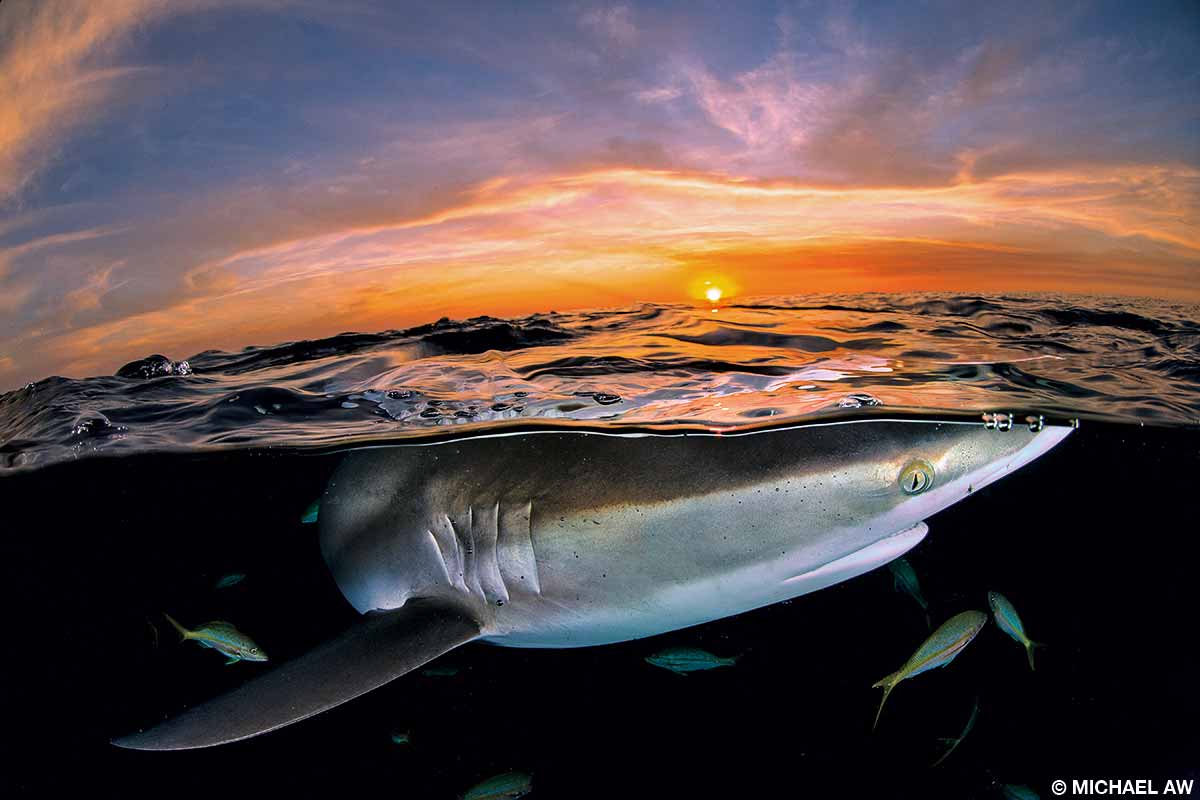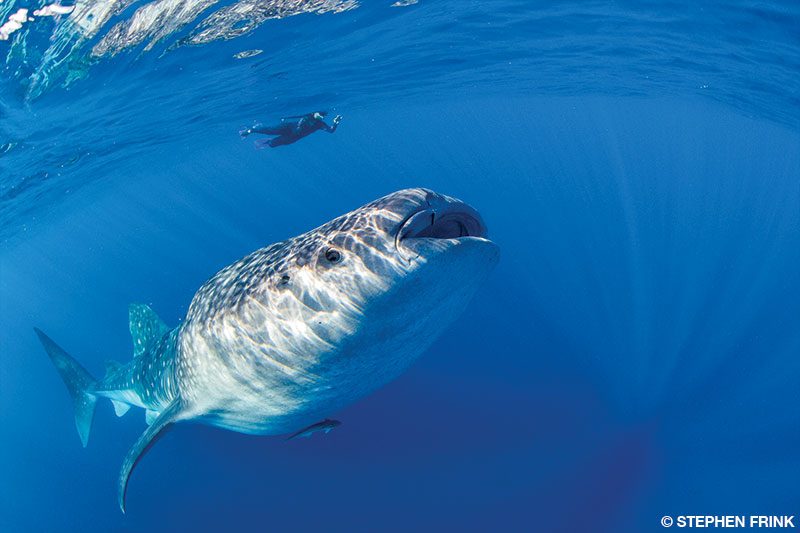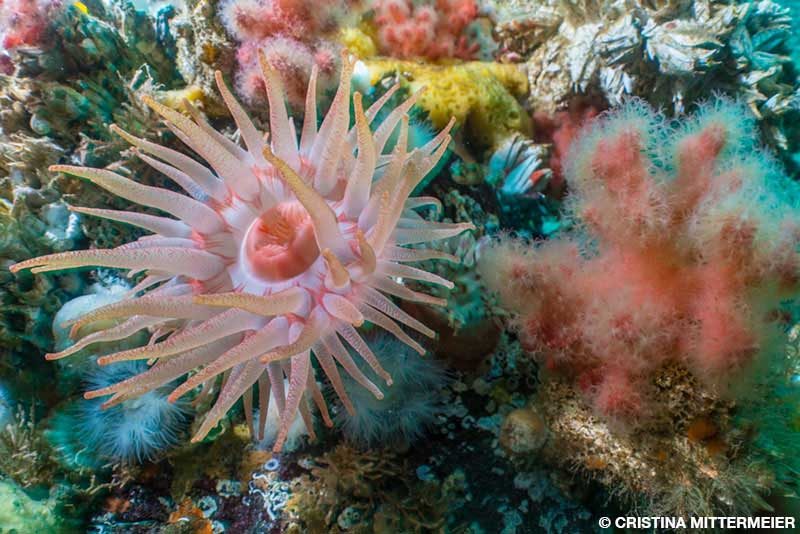Michael Aw’s early life while growing up in Singapore — he didn’t see the ocean until age 17 — gave few clues that he would one day become one of the most influential print journalists in destination diving and ocean conservation. The author of or major contributor to 43 books, Aw created Ocean Geographic magazine in 2007 and also leads expeditions, often to exotic regions. He now hopes to raise awareness of the folly of shark-finning and the overexploitation of our marine resources.
Underwater photographers usually evolve a specialty, but the first fork in their road typically involves defining an interest in either photographing natural history — marine life in particular — or concentrating on editorial and commercial work that inevitably involves photographing people underwater. Photos of charismatic marine life help tell the story of a dive destination or might be used for photo décor or stock photography. Compositions that illustrate people interacting with marine life bridge both disciplines and combine each approach’s rewards and challenges.
After reading the Shooter column “Cristina Mittermeier: Commitment to Conservation,” view this additional photo gallery of her work.
Turbid water can be a challenging environment for underwater photographers, particularly when shooting wide angle. Turbid water may not appear brown or green from the surface — in many cases the water looks entirely different once we drop in and begin the dive. All water is turbid to some degree. Understanding what causes turbidity and knowing how to work around it can make a world of difference when shooting in those conditions. One of the best skills a photographer can develop, particularly for shooting wide angle, is learning how to read water quality.
Underwater photographers sometimes refer to the narrow water zone where a subject splits the surface as the Plimsoll interface. Opportunities abound here for dynamic shots achieved by angling the camera above or below the waterline. The dedicated and creative underwater photographer can capture traditional over-under split shots with a standard straight meniscus and dramatic reflections from below of the subject, the sunlight or both as part of a modified split shot or a fully underwater picture.
LIKE ANOTHER UNIVERSE, the underwater world is full of whimsical inhabitants, sinuous sharks, and huge mammals that have always fascinated people and probably always will. As a photographer, you enter completely new territory when you begin shooting underwater and learning how to adapt to the conditions of the aquatic world. Lighting subjects underwater differs significantly […]
A STATEMENT ON FRED BUYLE’S WEBSITE briefly explains his approach to underwater photography: “To take his pictures and videos, Fred uses a simple formula: the water, available light, a camera, and one breath of air, nothing more, nothing less.” I would add to that list an extraordinary eye for composition and a passion for placing himself […]
I FIRST MET SCOTT “GUTSY” TUASON at a Diving Equipment and Marketing Association (DEMA) trade show in 2016. “You need to see his blackwater work. You’ll be blown away,” …
UNDERWATER PHOTOGRAPHERS SPEND ENORMOUS AMOUNTS OF TIME, energy, and money pursuing subjects. We often select our dive destinations with specific subjects in mind. Sharks or manta rays …



